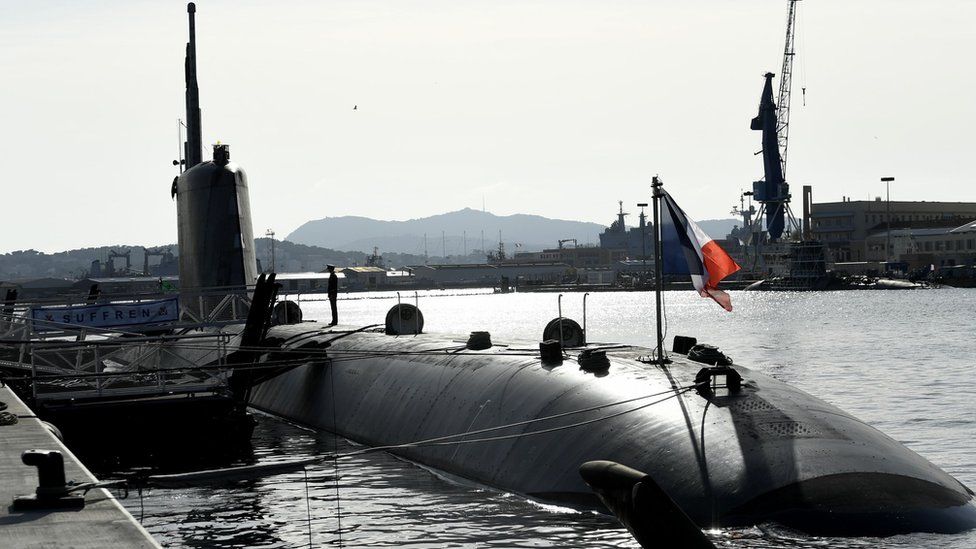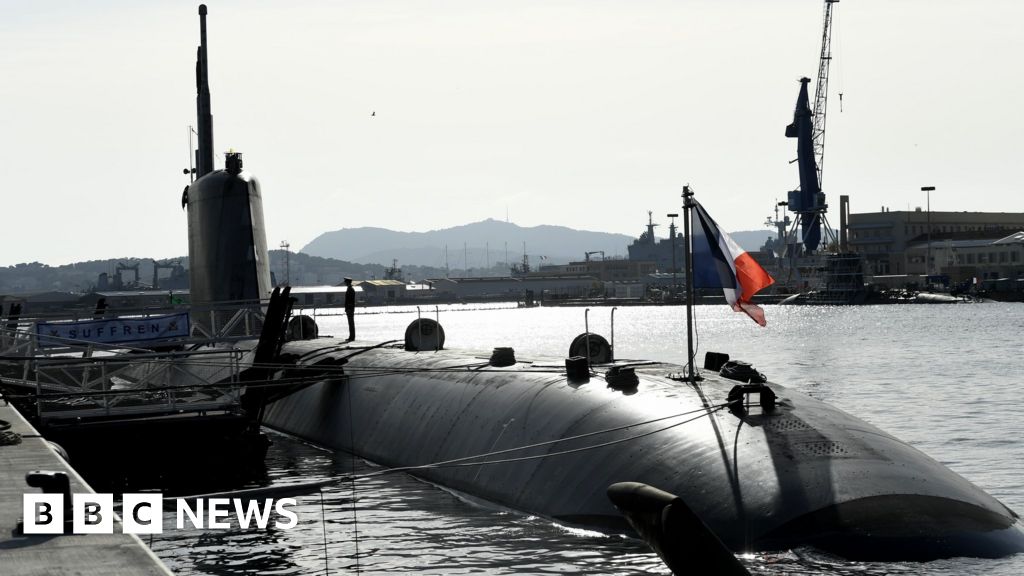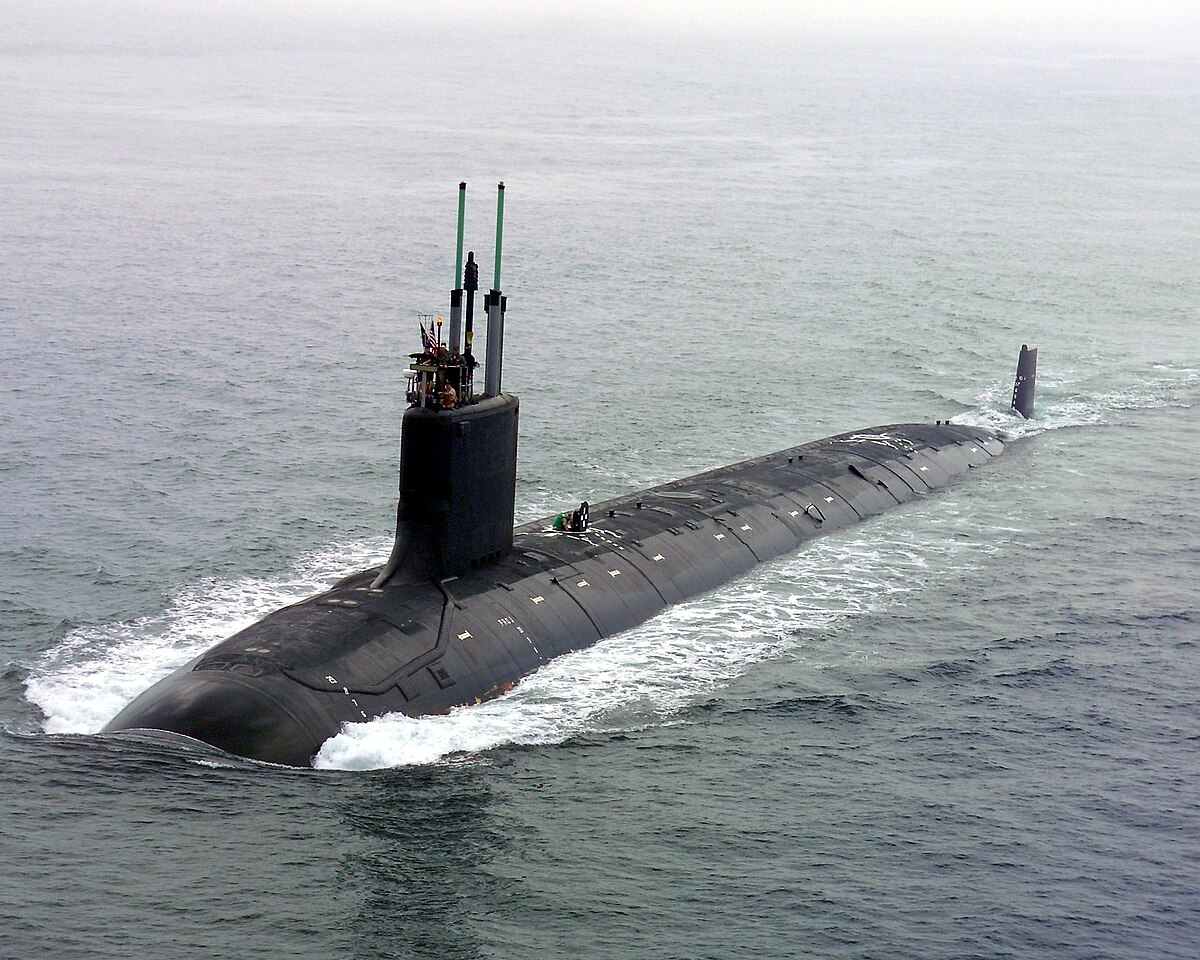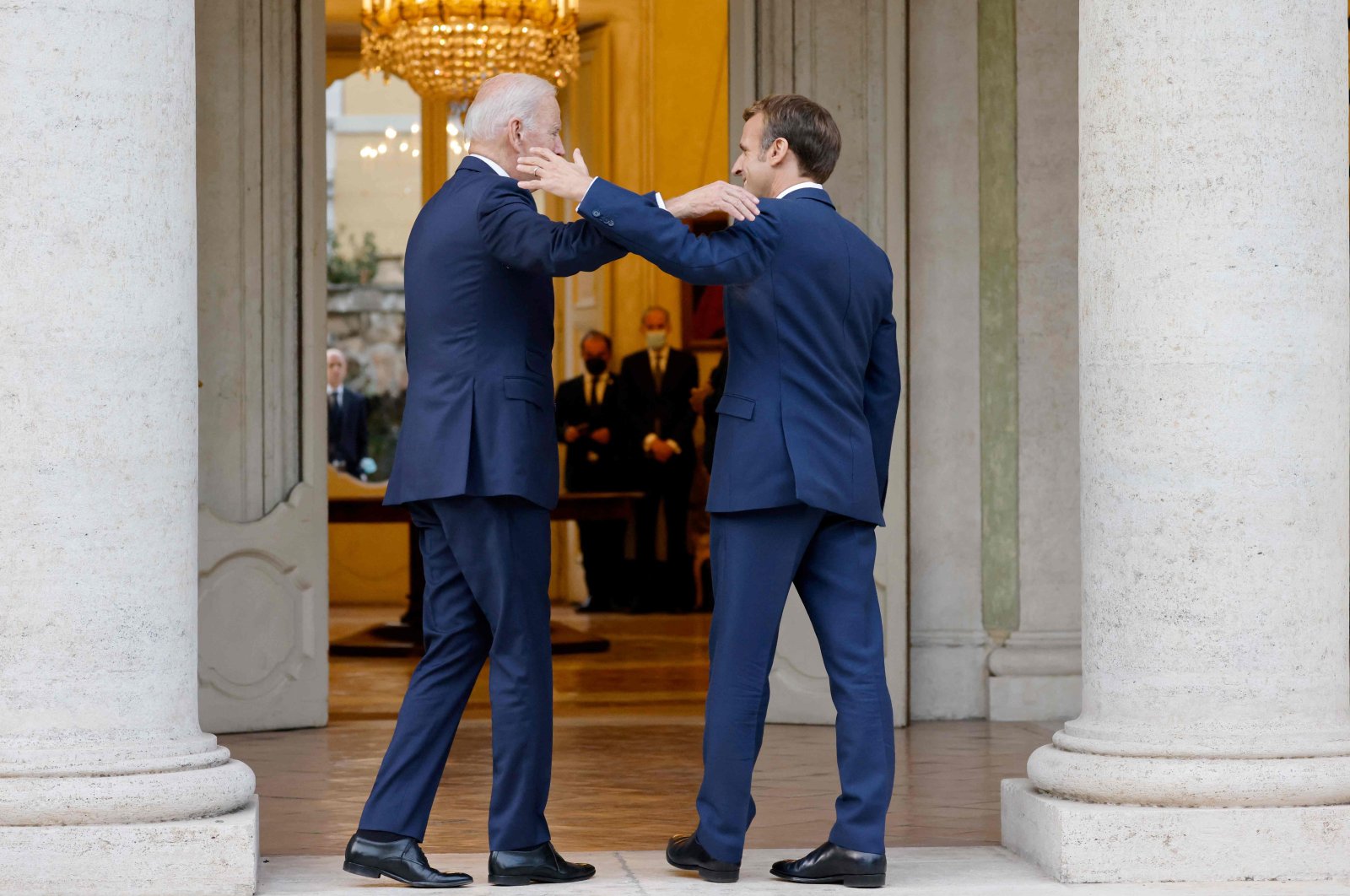Aukus pact: France and US seek to mend rift
Published1 hour ago
As a result of Aukus, France will no longer be selling submarines to Australia
France and US have made efforts to end a row which started last week with the announcement of the Aukus defence pact between the US, the UK and Australia.
The pact cost France a deal worth $37bn (£27bn) to build submarines for Australia.
Paris said it found out only hours before the public announcement.
The American and French presidents have now issued a joint statement saying the situation would have benefited from open consultations between allies.
Joe Biden and Emmanuel Macron spoke by phone for half an hour on Wednesday. They will also meet in Europe at the end of next month.
French anger was palpable - the French defence minister called it a "stab in the back".
In a rare step among allies, Mr Macron ordered the recall of the French ambassadors to Washington and Canberra.
However, the ambassador to Washington will now return to his post. There was no word on whether the ambassador to Canberra would do the same.
President Biden reaffirmed the importance of French and European engagement in the Indo-Pacific region.
And the statement underlined US recognition of the importance of stronger European defence to complement Nato - one of President Macron's flagship projects.
US Secretary of State Anthony Blinken and the French Foreign Minister, Jean-Yves Le Drian, are expected to hold a bilateral meeting on Thursday on the sidelines of the UN General Assembly in New York, according to a US official.

US and France agree to move on
Analysis by Nomia Iqbal, Washington correspondentThis was a classic "non-apology apology" by the Americans: an apology for the process (the lack of consultation), but not for the policy itself (Aukus). But we did get a picture of President Biden smiling whilst on the phone with President Macron, in an attempt to show all is well.
As far as the readout goes, they can often be rather bland, but this had lots of meaning.
Firstly, it was a joint statement, when usually you get one from each side, so both leaders were trying to show a united front after their "friendly 30-minute call". It made clear at the start that President Biden initiated the call - perhaps this was something France wanted to make sure was known.
Then there is this line: "The two leaders agreed that the situation would have benefited from open consultations" - again, something France wanted in there?
But America had its say too, Biden did not alter his ongoing underlying message that Europe needs to contribute more to its own defence.
It then ended with a pointed reminder of the US giving extra counter-terrorism help in the Sahel, where the French are hugely invested.
In short, it was a statement that was clearly very well crafted for both sides to get their points across and move on. But a smiling phone call is one thing. What about when the two presidents meet in person next month in Europe?
It is worth mentioning that President Macron is facing re-election next year. His hanging tough with President Biden was important domestically but equally he needed to find an exit ramp. Today's call delivers it.

Earlier, UK Prime Minister Boris Johnson told Mr Macron to "donnez-moi un break" and get over his anger about Aukus.
Brokered last week, Aukus is widely seen as an effort to counter China's influence in the contested South China Sea.
Analysts have described it as probably the most significant security arrangement between the three nations since World War Two.
- ANALYSIS: Aukus pact could signal power shift in Asia-Pacific
- LETTER FROM PARIS: Aukus pact delivers France some hard truths
- LETTER FROM SYDNEY: Australia's big gamble on the US over China
It is the third event - between the EU and Australia or the EU and the US - that could face postponement following the announcement of the Aukus pact.

Aukus pact: France and US seek to mend rift
The deal caused outrage in France, which lost a contract to build submarines for Australia.










